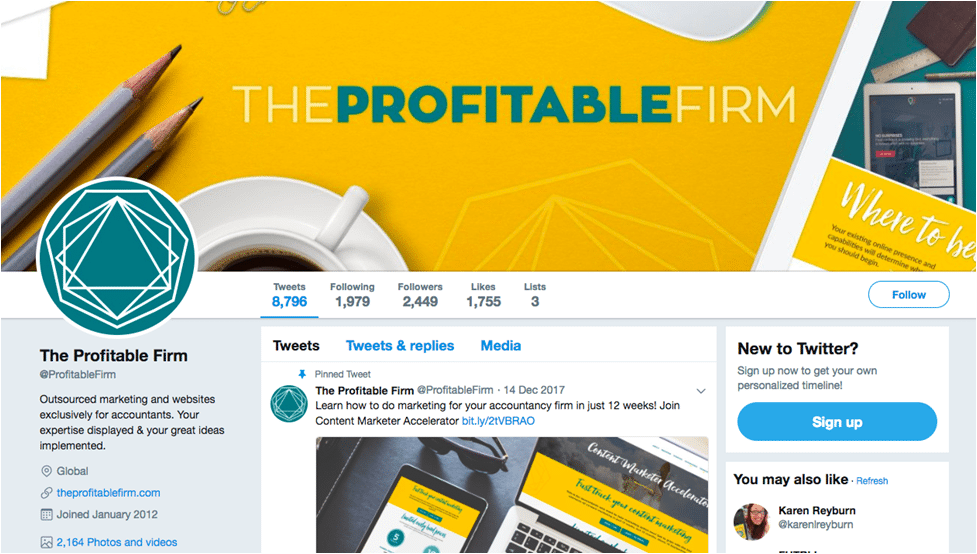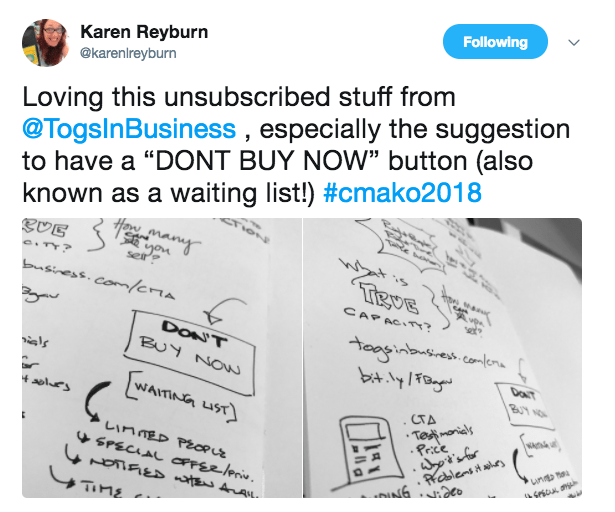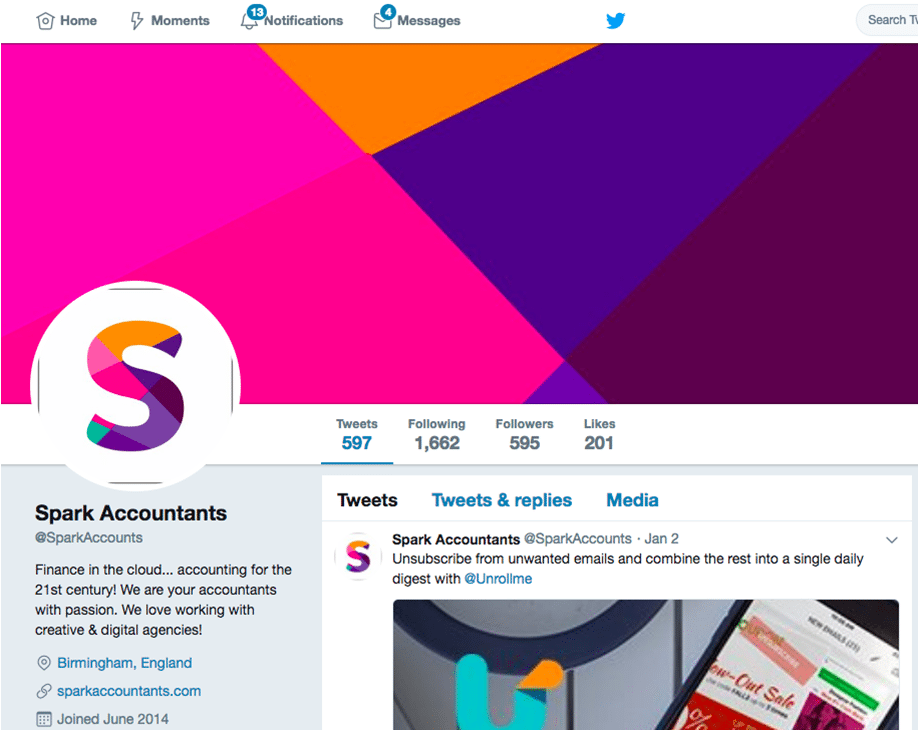
When used correctly, Twitter has so much potential and can be a very powerful social media channel to help you generate more leads and build stronger relationships with your clients and potential clients.
However, Twitter is also one of those social media channels that is often underused or misunderstood by accountants.
Is Twitter right for you?
Before using any social media platform, you need to ask yourself, ‘is my target audience using that channel?’
Twitter is not the largest social media channel (Facebook and Instagram have more active users for example), but there are still a lot of people (over 300 million) who use it regularly. So there is still a very good possibility your target audience are on Twitter too.
If your target audience are using Twitter, then there is a way you can easily find them, engage with them and do business with them.
What makes Twitter unique?
One of the great things about Twitter is the ability to build relationships with people naturally.
Unlike Facebook, which greatly limits how many people see your posts unless you do any kind of paid advertising, on Twitter you can start to grow an audience and generate leads without spending a penny on paid ads.
Your main investment with Twitter will be your time. And you can spend as much or as little time as you like. Of course, like most things, the more time you or your team can spend on it – the better results you can get.
Also, unlike Facebook which is constantly changing (almost every day!), Twitter is a little bit more stable, which means the principles, strategies and tactics you learn to use Twitter effectively in your accountancy firm, can be implemented for many months or years into the future.
Because Twitter is also easy to learn, it can be a great platform for you to start your social media journey on. You can even use Twitter to test how well people engage with your content and how well people respond to your lead generation messages.
Twitter is also an open social media channel. This means, unlike Facebook, Instagram and LinkedIn where most people have private accounts or you need to be connected to them to speak, on Twitter most people have public accounts which means you can start conversations with almost anyone in your target audience. Twitter encourages you to talk and engage with your audience.
So now that you know if Twitter is right for you and what makes Twitter unique, let’s go through my “3 Steps to Success” with Twitter.

I often get asked by accountants ‘Do I need to create a Twitter account for myself, my accountancy firm or both?’ I strongly encourage you to create a Twitter account for both yourself, your accountancy firm and even your team members.
However, if your time is limited, then you can start by creating a Twitter account for your accountancy firm first, and then once you’ve got to grips with how that works, you can move onto creating a Twitter account for your personal brand and then finally you can lead by example and encourage your team to do the same.
When creating a Twitter account for the first time, here are a few tips to help you get started:
- Choose a username that is consistent or similar to the usernames of your other social media channels.
- Ensure your Twitter design looks good. Branding is very important. I’ve seen the accountants that have good looking logos and cover images for Twitter perform much better than those that don’t have a good design and branding.
- Fill out your Twitter bio description. This description will give people a reason to follow you or not. Don’t just say what you do, but say how you provide value to your target audience and those who follow you.
- Include a link to your website so people can learn more about you and your accountancy firm.
- People like to engage with people. Although it’s great to grow your accountancy firm’s Twitter page, from my experience, most people prefer to engage with people. So be sure to create and be active on your personal Twitter account as well as your accountancy firm’s Twitter page.
- Get the Twitter app on your phone. This makes tweeting, responding to tweets and messages, super easy. You can even login to multiple Twitter accounts within the same app.
Post social media updates regularly
Now imagine someone from your target audience goes to your Twitter profile for the first time and they see that it’s empty or that you haven’t been posting anything interesting or relevant to them. Do you think they will follow you? Probably not.
It’s important that on all your social media channels, you post regular and relevant social media updates that your target audience will be interested in.
Also, feel free to post a variety of social media content. You can create videos, post pictures of events you attend, sketch notes and so on.

One of the easiest ways to grow your audience using Twitter is to research people that are your potential clients, then follow and engage with them. The good news is this is free. However, there will be a time investment. You can either do it yourself, train someone on your team to do it or outsource it to us.
Usually, whenever you follow someone on Twitter, they will get a notification and sometimes even an email with who you are, what you do and a link to your website. If they go to your Twitter profile, and like what they see (which is why it’s important to look good and post regular social media updates) then chances are very high that they will follow you back and become a part of your target audience.
So the question now is: how can you find people who are your potential clients on Twitter?
There are lots of different research tools to help you find people based on their job titles, industry, location, etc. Here are some of my favourite free tools to help you do this:
You can spend as much or as little time as you like following relevant people in your target audience. The more targeted people you follow, the more people will follow you back.
It’s also important that you unfollow some of those who don’t follow you back. I recommend you wait at least 2-5 days. So every so often, maybe once a week, use tools such as Crowdfire app to see who hasn’t followed you back. The ones that haven’t followed you back, you will need to unfollow.
Why?
Two reasons….
1. Twitter has follow ratio limits. For example, if Twitter notices that you follow 1,000 accounts and you only have 100 people following you back, they might stop you from following more until you grow your follower number.
2. If you follow lots of Twitter accounts and only a few are following you back it doesn’t make you look good. Ideally you want to have similar numbers in terms of those you follow and those following you back (or even have more followers than those you’re following).

The next step is getting those in your Twitter audience to become leads. How do you do that? By using relevant, interesting content that your target audience will find helpful.
For example, if you’re targeting charities, you could give away a free guide on ‘how to manage your finances in your charity effectively’ or if you’re targeting businesses interested in digital technology you can give a free video on the ‘Top 5 best tools to help you be more productive in your business’.
You can offer people this content by messaging them directly on Twitter and starting a conversation with them or you can do this by posting social media updates.
Just make sure that you’re not selling anything. At this step, you want to be providing only value and helping your target audience as much as you can.
The goal with your lead generation content is to get your potential clients name & email so that you can follow up with them through email marketing and by sending them more valuable content that builds up trust.
Also, if you would like to get more engagement on your Twitter posts, then you need to engage with other people first. The more you engage with people in your audience (by liking or replying to their Tweets), the higher the chances are those people will see your content in the future (because of the way the Twitter algorithm works).
See also: How to generate leads in your accountancy firm on social media for more tips on how to use content to generate leads on all the social media channels.
Be consistent in your Twitter marketing
Like all things in marketing, results don’t happen instantly. It’s about taking action on a regular basis, that will have a compounding effect on your results.
With your Twitter strategy, it’s really about repeating steps 2 and 3 on a regular basis. The more you do this, the better results you will get.
Finally, remember: once you start to grow your audience on Twitter and generate leads, the last step is to convert your leads into sales. Be sure to read my article on how to convert leads from social media into clients.
As always, if you have any other questions about Twitter, feel free to send me an email or book a meeting with me. I’d also be happy to answer any other questions you may have in a future blog post.
About the Author
Ashley Davis is the Social Media Director at The Profitable Firm and also works with small to medium sized businesses at Skyline Social.




